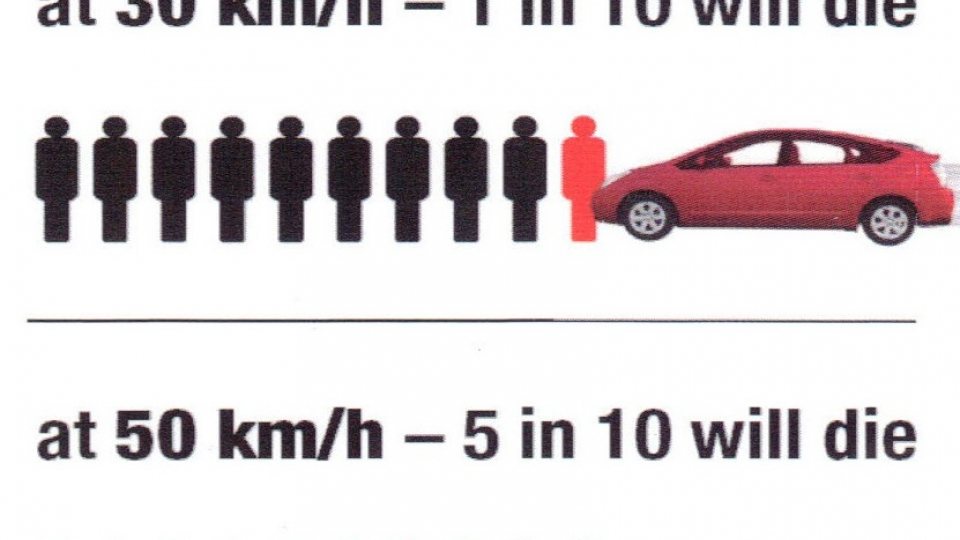Cyclist.ie and Dublin Cycling Campaign strongly endorse the Jake’s Legacy campaign
Press release issued 17th February for immediate use to coincide with Jake’s Legacy vigil at Leinster House gate from Sun 15th to Wed 18th Feb.
Dublin Cycling Campaign / Cyclist.ie– The Irish Cycling Advocacy Network – strongly endorses the ‘Jake’s Legacy’ campaign to introduce lower speed limits in residential areas and estates. We have been campaigning for 30 kph to become the default urban speed limit here in Ireland, similar to many UK and European cities.
We believe there is a need for a fundamental change in how roads authorities view the interaction of traffic with people, to enable pedestrians and cyclists of all ages to use our roads and streets safely. In line with government policy as outlined in the Design Manual for Urban Roads & Streets (DMURS, 2013) [1], this will lead to increased safety– see diagram above (and PDF below) - and will encourage more active travel on foot and on bikes. Much road traffic planning and provision has tended to be for the benefit of the private motorist to the detriment of other road users such as public transport users, pedestrians and cyclists.
Cyclist.ie wants to see a realisation of government targets, which aim to increase the use of the bike for everyday activity and more general active travel. Besides improving the general health of our population, this will also lead to safer roads and streets and help to transform residential estates into more vibrant and safer living spaces, with consequential benefits for the quality of life. 30 kph speed limits will help to realise these targets.
Throughout Europe, 30 kph is now generally accepted as the default urban speed limit. In some cities, speed limits as low as 10 kph are in place in what are known as ‘home zones’. Even in the United States, where the car is king, 25 mph (40 kph) limits are common in urban areas and 15 mph (24 kph) limits at schools. In the UK the “20’s Plenty” Campaign has been successful in securing reduced speed limits in many urban locations [2].
Lower speeds also result in less noise and pollution and greater fuel efficiency (high fuel consumption is associated with stop-start traffic, not slow traffic). On residential roads and shopping streets, people simply don’t want to be exposed to the noise, fumes and dangers from higher speed traffic.
Cyclist.ie and Dublin Cycling Campaign will be joining the Jake’s Legacy vigil outside Leinster House on Tuesday 17th February at 1pm.
Further information: Dr. Mike McKillen (Chair of Cyclist.ie): 087-2314 613
[1] Department of Transport, Tourism and Sport and Department of Environment, Community and Local Government (2013). Design Manual for Urban Roads & Streets (DMURS), 2013. http://www.environ.ie/en/Publications/DevelopmentandHousing/Planning/Fil… [Accessed 16/February 2015]
[2] 20’s Plenty for Us, 2015. Briefings. http://www.20splentyforus.org.uk/briefings.htm [Accessed 16/February 2015]
Help us do more for cycling in Dublin by becoming a member!

